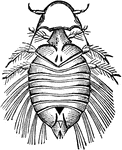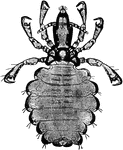Clipart tagged: ‘lice’
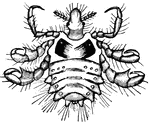
Crab-louse
The crab louse can live in almost any form of human hair, leading to its other common name of pubic…

Ladybug
"Lady-bird beetles, or "lady bugs." These beetles are very destructive to plant lice." — Goff,…

Ladybug
"Lady-bird beetles, or "lady bugs." These beetles are very destructive to plant lice." — Goff,…

Ladybug
"Lady-bird beetles, or "lady bugs." These beetles are very destructive to plant lice." — Goff,…
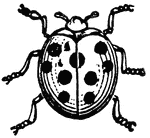
Ladybug
"Lady-bird beetles, or "lady bugs." These beetles are very destructive to plant lice." — Goff,…
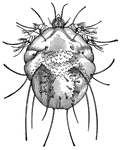
Head Louse
Head lice are parasites. That is any plant or animal which feeds upon another living plant or animal…

Magnified Louse
"A genus of insects, the type of a very numerous family, which forms the order Parasita or Auoplura.…

Apple Plant Louse
The females deposit their eggs, which are small, oval, and black, on twigs and bark in the autumn; the…

Apple Plant Louse
The females deposit their eggs, which are small, oval, and black, on twigs and bark in the autumn; the…
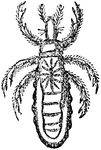
Crab Louse
Pediculus Pubis. The crab-louse is gray-black and is a much broader square form than the other two species…

Hog Louse
A detailed view of the scansorial claw of the hog-louse of the Hermatopinus urius species.

Phylloxera
A genus of lice classed with the aphidae, which feed as parasites on different kinds of plants. The…



